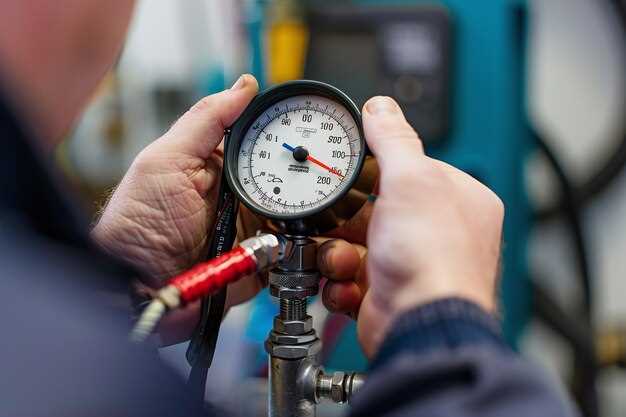

Pressure testing is a critical diagnostic procedure used to assess the integrity of diesel coolant systems. This process allows technicians to identify leaks and weaknesses within the system, ensuring that the engine maintains optimal cooling performance. By applying pressure to the coolant system, potential issues can be detected before they lead to severe engine damage or costly repairs.
The procedure typically begins with the technician pressurizing the coolant system using specialized equipment. The pressure is monitored closely to determine if any drops occur during the test, which would indicate the presence of a leak. This method not only reveals existing problems but also helps in evaluating the overall condition of the coolant system components, such as hoses, radiators, and connections.
Conducting a comprehensive pressure test can significantly extend the lifespan of diesel engines. Timely identification of coolant system failures allows for prompt maintenance and repairs, ultimately contributing to better engine performance and efficiency. Understanding the importance of pressure testing is essential for anyone involved in diesel engine maintenance or repair.
Understanding Coolant Pressure and its Role in System Integrity

Coolant pressure plays a critical role in maintaining the integrity of diesel coolant systems. The pressure within the system is essential for ensuring that coolant circulates effectively, facilitating optimal engine temperature management. Proper pressure levels help prevent the formation of steam bubbles, which can lead to overheating and potential engine damage.
In a diesel engine, the coolant absorbs heat from the engine block and transports it to the radiator, where it dissipates heat into the atmosphere. Maintaining adequate pressure ensures that the coolant remains in a liquid state, even at high temperatures. If the pressure drops below a specific threshold, the coolant may boil, leading to decreased cooling efficiency and increased risk of engine failure.
Regular pressure testing is crucial for identifying leaks or weaknesses within the system. A drop in pressure can indicate a failing radiator, worn hoses, or a malfunctioning water pump. System integrity is compromised when pressure is not maintained, potentially resulting in significant mechanical issues and costly repairs.
Adjusting and monitoring coolant pressure can enhance the performance and longevity of diesel engines. By utilizing pressure testing methods, technicians can ensure that the coolant system operates within the designed specifications, preserving engine health and efficiency.
Step-by-Step Guide to Performing a Coolant Pressure Test

Performing a coolant pressure test is essential to identify any leaks in the coolant system of a diesel engine. This test will help ensure that the system is sealed and functioning properly. Follow these steps to conduct an effective coolant pressure test.
Step 1: Gather Necessary Tools
Before starting, obtain the required tools: a coolant pressure tester, safety goggles, gloves, and a funnel. Make sure the vehicle is cool to avoid burns and injuries.
Step 2: Locate the Coolant Fill Cap
Identify the coolant reservoir or radiator fill cap. This is usually located at the front of the engine compartment. Ensure all components are easily accessible and clean.
Step 3: Remove Coolant Cap
Carefully remove the coolant cap to release any built-up pressure. Be cautious, as hot coolant may still be present. Take precautions to avoid spills.
Step 4: Attach Pressure Tester
Connect the coolant pressure tester to the fill neck. Ensure a secure fit to prevent any coolant from leaking during the test. Check the gauge to see the baseline pressure.
Step 5: Apply Pressure
Using the pressure tester, pump it to the manufacturer’s specified pressure level, typically between 13-16 psi. Monitor the gauge closely. This will simulate normal operating conditions in the coolant system.
Step 6: Inspect for Leaks
While maintaining the pressure, visually inspect all hoses, connections, the radiator, and heater core for signs of leaks. A drop in pressure on the gauge indicates a leak, which must be addressed.
Step 7: Release Pressure and Remove Tester
Once the inspection is complete, carefully release the pressure from the tester. Remove it from the coolant system and reattach the coolant cap securely.
Step 8: Check Coolant Level
Finally, check the coolant level in the reservoir or radiator. Add coolant if necessary to maintain proper levels, ensuring the vehicle is ready for operation.
Performing this test regularly will help maintain the integrity of the coolant system in diesel engines, preventing overheating and potential damage.
Interpreting Pressure Test Results for Accurate Diagnostics
Interpreting pressure test results is crucial for diagnosing potential issues within diesel coolant systems. During the test, a specific pressure is applied to the system to assess its integrity and ability to maintain that pressure over time. Accurate readings are essential for identifying leaks, blockages, or component failures.
When evaluating the results, a decrease in pressure indicates possible leaks, which may be located in hoses, gaskets, or radiator components. Conversely, if the pressure holds steady, it suggests that the system is sealed properly, but further diagnostics may be necessary to identify other less obvious issues such as clogged passages or faulty thermostats.
Comparing the test results with manufacturer specifications allows for determining whether the system operates within acceptable parameters. Discrepancies can highlight areas requiring further inspection and repair, ultimately leading to more efficient troubleshooting and maintenance strategies.
Additionally, it’s important to consider temperature fluctuations that can affect pressure readings. Conducting tests under controlled conditions helps in obtaining reliable data. By consistently interpreting pressure test results accurately, technicians can ensure the longevity of diesel coolant systems and prevent costly repairs in the future.






